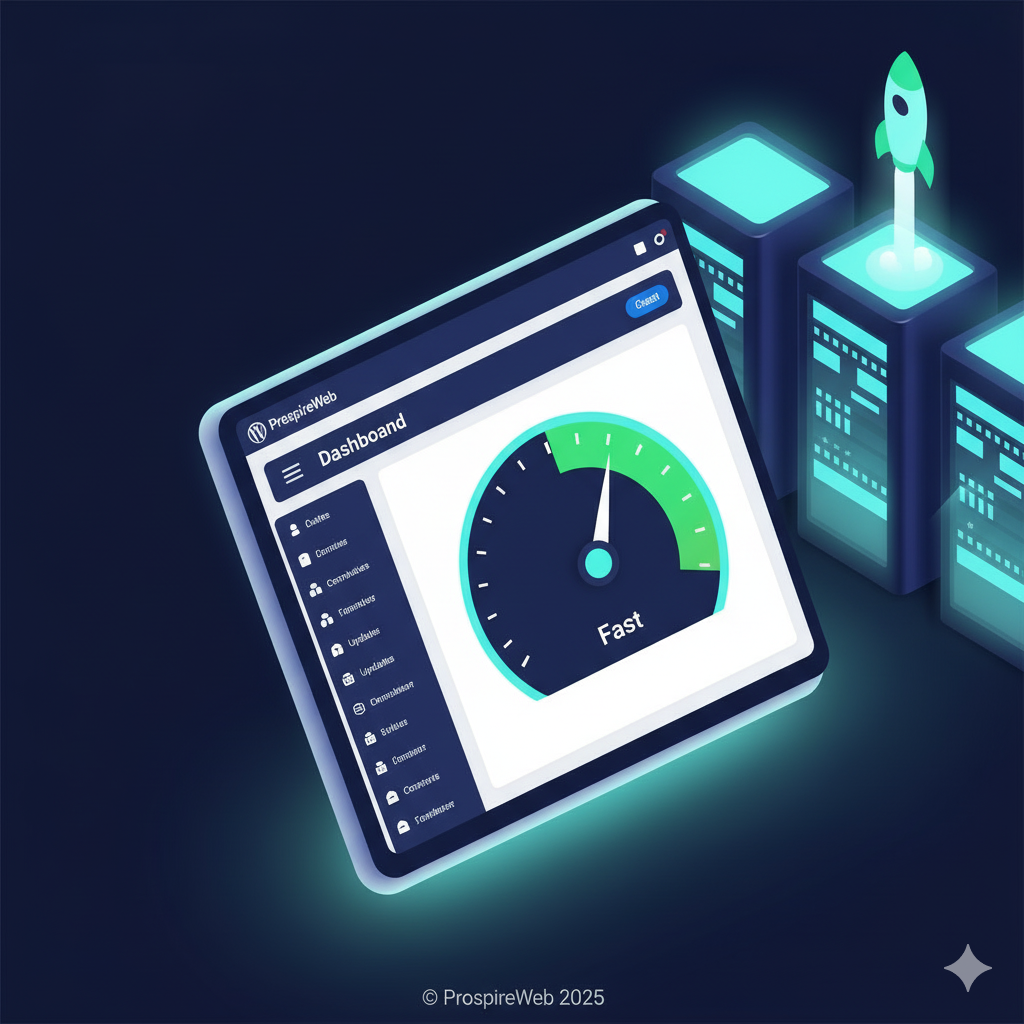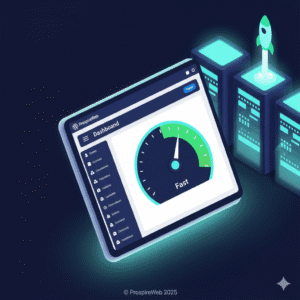Introduction
In 2025, website speed isn’t a luxury. It’s survival.
Google research shows that 53% of visitors leave if a site takes longer than 3 seconds to load. For SMBs, that means lost calls, missed bookings, and customers moving to competitors.
The good news? If your site runs on WordPress, there are proven optimization fixes that can transform performance.
Here are 10 practical speed optimization tips every SMB owner should implement this year.
1. Run a Speed Audit First
Before fixing, know where you stand. Use tools like:
Google PageSpeed Insights
GTmetrix
WebPageTest
Look at Core Web Vitals: Largest Contentful Paint (LCP), First Input Delay (FID), and Cumulative Layout Shift (CLS).
2. Choose Fast Hosting
Shared cheap hosting = slow, unreliable sites.
Switch to managed WordPress hosting (SiteGround, Cloudways, Kinsta).
A faster server instantly improves TTFB (time to first byte).
3. Use a Lightweight Theme
Heavy themes with unnecessary features slow down load times.
Pick performance-first themes (GeneratePress, Astra, Kadence).
Keep your design clean. Simplicity = speed.
4. Optimize Images
Large images are the #1 speed killer.
👉 Use plugins like ShortPixel or Smush.
👉 Convert to WebP format for smaller file sizes.
👉 Lazy load images so they only load when visible.
5. Enable Caching
Caching stores site data so it loads faster for repeat visitors.
👉 Use WP Rocket, W3 Total Cache, or LiteSpeed Cache.
👉 Enable both browser and server caching.
6. Use a Content Delivery Network (CDN)
A CDN delivers your content from servers closest to your users.
Cloudflare, BunnyCDN, or StackPath.
For SMBs targeting US markets (Austin, Miami, Phoenix), this is a game-changer.
7. Minify CSS, JS, and HTML
Your site has unnecessary code bloat.
👉 Use Autoptimize or WP Rocket to compress CSS/JS/HTML.
👉 Test after minifying — sometimes scripts conflict.
8. Optimize Database
Old post revisions, spam comments, and transients bloat your database.
Use WP-Optimize to clean database tables monthly.
Schedule auto-cleanups to avoid manual work.
9. Reduce Plugins
Every plugin adds load time. Some conflict and cause crashes
Audit plugins → keep only what you use.
Replace multiple plugins with single multifunction ones (e.g., RankMath for SEO).
10. Implement Core Web Vitals Fixes
Google’s ranking system now factors UX metrics.
Fix CLS with stable fonts + responsive layouts.
Improve LCP by optimizing hero images and caching.
Reduce FID by delaying non-critical JavaScript.
Proof From Data (Why Speed Matters)
Akamai: 1-second delay = 7% drop in conversions.
HubSpot: Sites under 2s have 70% longer session times.
Backlinko: Faster sites rank higher in Google SERPs.
For SMBs, speed = leads.
Real-World Scenarios
A roofer in Houston saw site crash after storm → fixed with CDN + caching.
A dentist in Miami doubled bookings by cutting load time from 6s → 2s.
A law firm in Austin reduced bounce rate by 40% with Core Web Vitals fixes.
Our WordPress Optimization Process at ProspireWeb
At ProspireWeb, we don’t just design WordPress sites — we make them perform:
Audit – speed tests, Core Web Vitals, plugin review.
Fix – caching, image compression, hosting setup.
Optimize – CDN, schema, database cleanup.
Monitor – continuous testing + monthly reports.
Frequently Asked Questions
Under 2 seconds on both desktop and mobile.
Yes, but pro versions (e.g., WP Rocket) offer better caching + CDN.
Not always — but technical fixes (Core Web Vitals, database optimization) are best handled by specialists.
Yes. Faster sites perform better in Google’s Core Web Vitals + keep visitors engaged.
Conclusion
In 2025, slow websites = lost leads.
By applying these 10 WordPress optimization tips, SMB owners can transform their websites into fast, reliable lead machines.
At ProspireWeb, we specialize in WordPress Development & Performance Fixes for contractors, lawyers, clinics, and SMBs.
👉 Don’t lose calls to slow sites. Book Your Free WordPress Audit Today!






